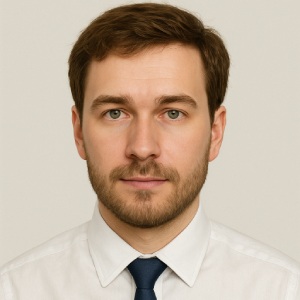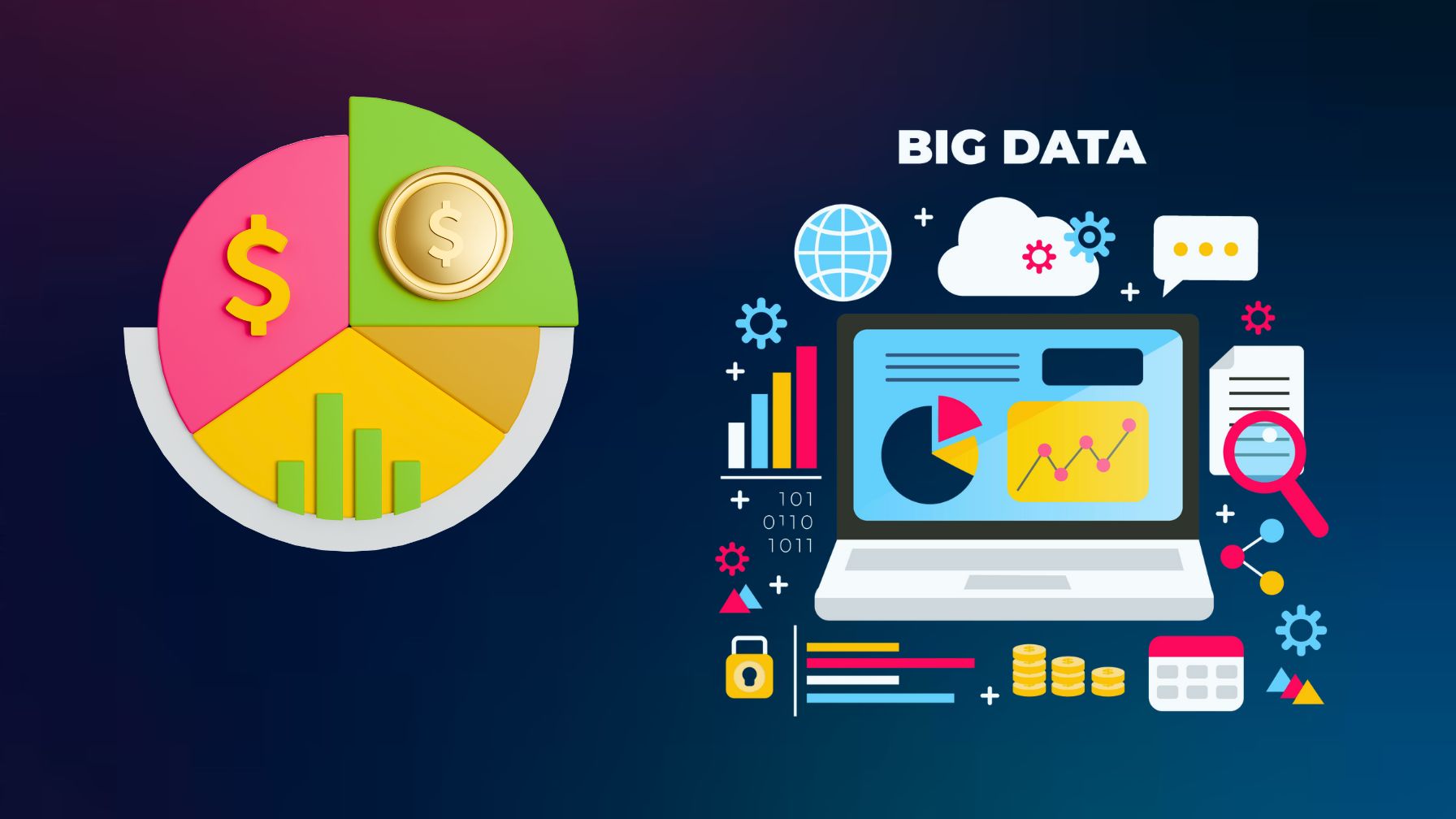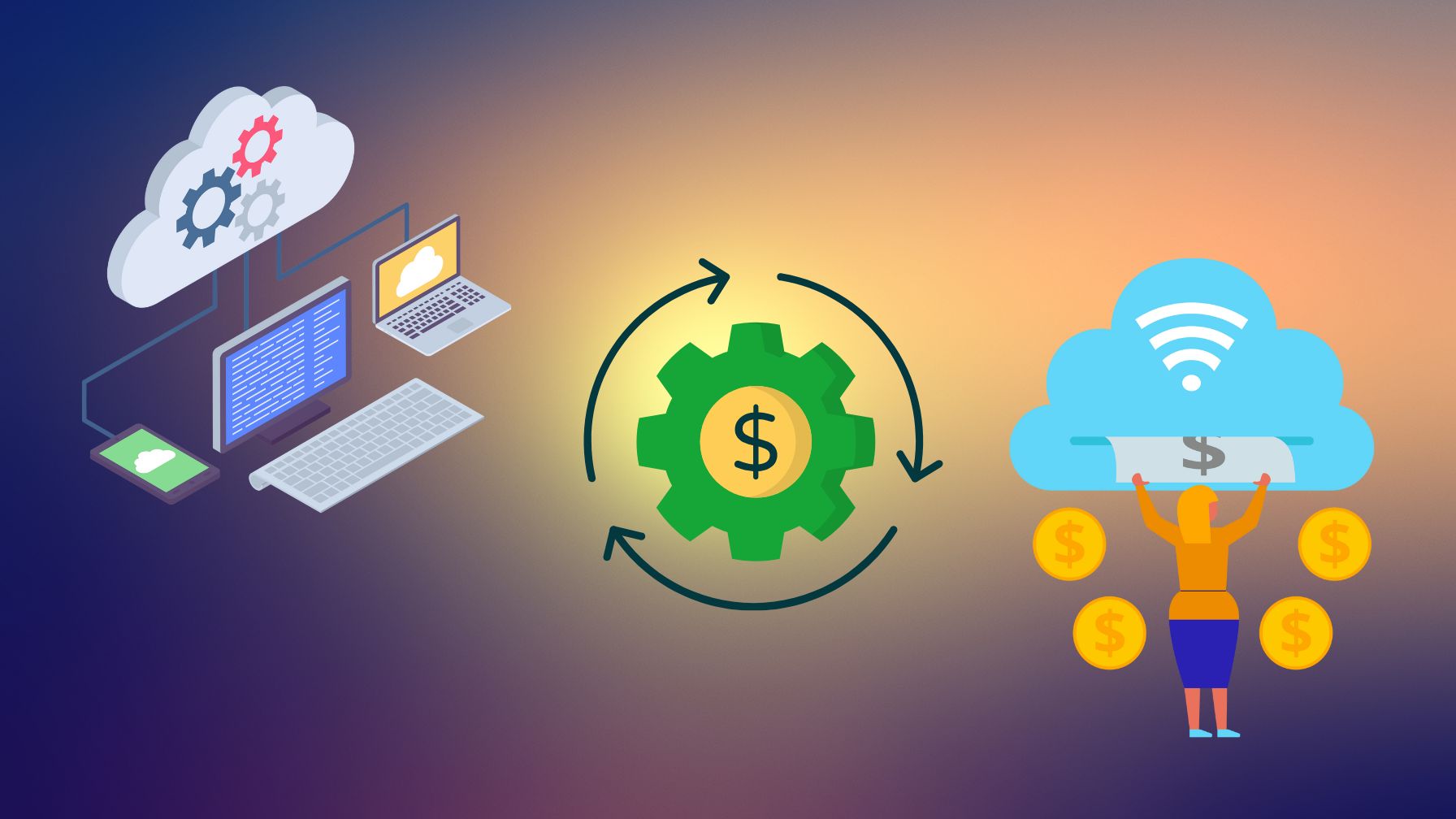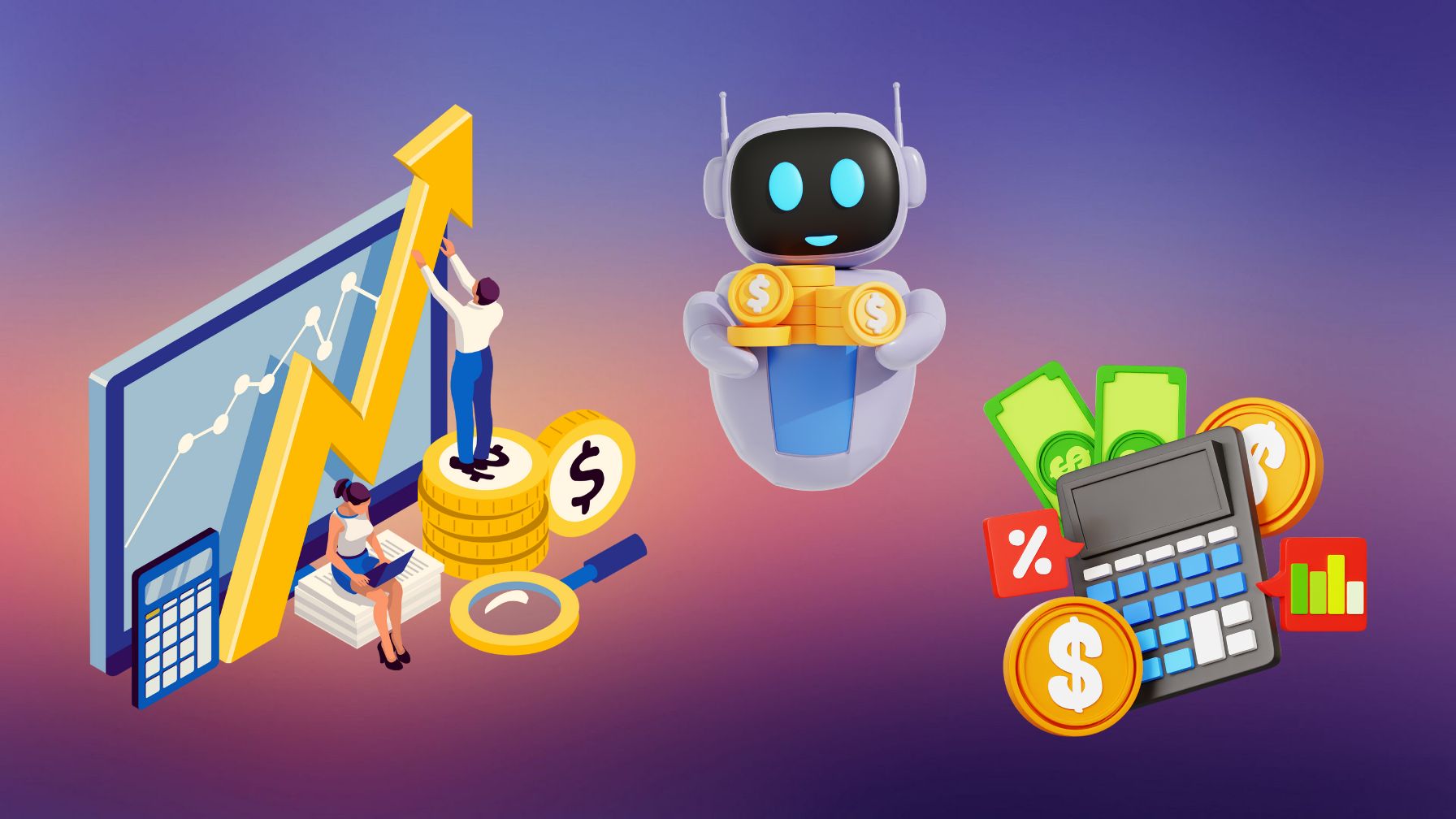The financial world is transforming, driven by the vast power of Big Data. From optimizing operational processes to predicting market trends, data has become the cornerstone of modern financial decision-making. Financial institutions are increasingly leveraging data analytics to gain deeper insights into customer behavior, improve risk management, and innovate their services. As we move into 2025, understanding how Big Data is revolutionizing the finance industry is crucial for staying ahead of the curve. This article delves into the key statistics and insights on how Big Data is shaping the future of finance.
Editor’s Choice
- The global Big Data analytics market in finance is projected to reach $51.4 billion in 2025, growing at a 28.99% CAGR.
- Financial institutions leveraging Big Data analytics report up to a 30% increase in operational efficiency, showcasing the tangible benefits of adopting these technologies.
- Over 75% of banks and financial institutions in the U.S. are investing in risk technology transformation to integrate Big Data into their risk management strategies.
- AI-powered data analytics is forecasted to reduce compliance costs by up to 30% for financial firms in 2025.
- In 2025, data, metrics, and analytics emerged as the top priority for CFOs, reflecting a strategic shift towards data-driven decision-making.
- Machine learning algorithms have significantly improved fraud detection rates, with companies like Mastercard analyzing up to 160 billion transactions annually using AI-driven systems.
- Real-time data processing is set to save financial institutions approximately $2 billion annually in operational costs by 2025, highlighting its impact on efficiency.
Benefits of Big Data and Analytics in Finance
- Financial organizations utilizing Big Data report an average 12% increase in decision-making speed due to real-time data insights.
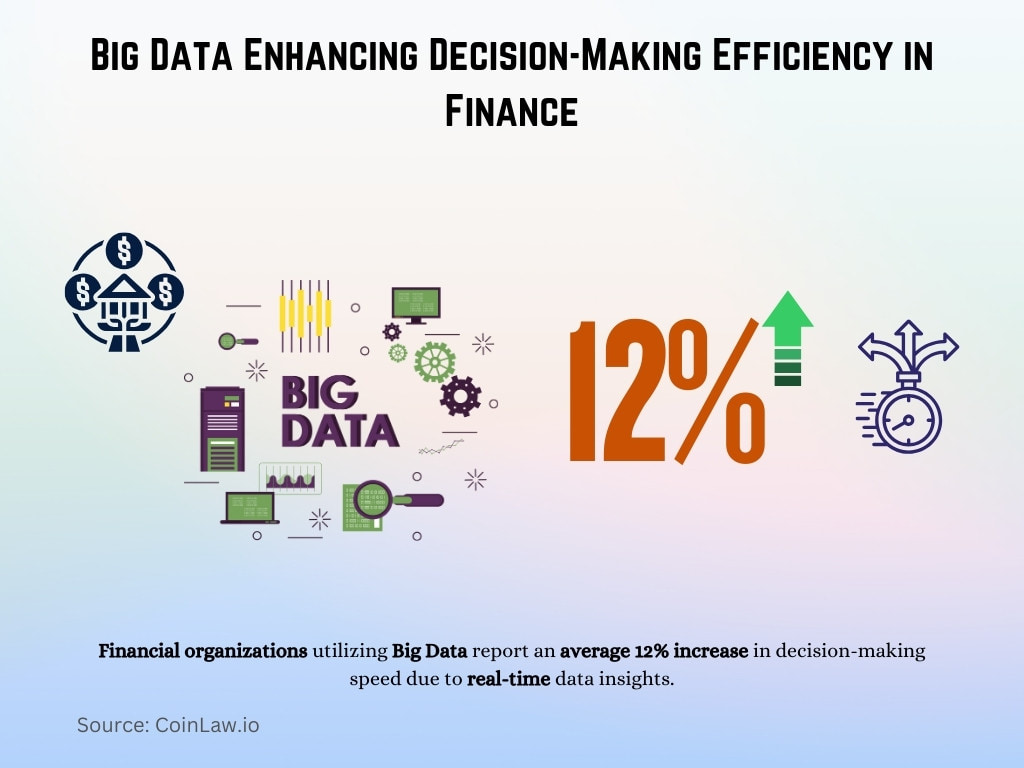
- Customer retention rates improved by 14% for banks that implemented Big Data-driven customer service solutions.
- Predictive analytics tools enabled firms to forecast 80% of market fluctuations more accurately.
- Operational costs in banks dropped by 20-30% after adopting Big Data analytics for workflow optimization and process automation.
- Personalized financial products based on data-driven insights have led to a 25% increase in cross-selling opportunities across major financial institutions.
- Credit risk assessments powered by Big Data analytics reduced loan default rates by 18%.
- Big Data solutions have cut the time required for customer onboarding by 50%, improving overall customer experience and satisfaction.
Big Data Adoption in Banking and Financial Institutions
- Over 95% of global banks will have integrated Big Data analytics into their operations by 2025, enhancing risk assessment and customer insights.
- In 2025, 85% of U.S.-based banks will be utilizing Big Data technologies to streamline operations and enhance decision-making.
- 42% of financial institutions report that their biggest challenge with Big Data adoption is integrating legacy systems with new technologies.
- The Asia-Pacific region has seen a 23% increase in Big Data adoption within financial services in 2025, making it one of the fastest-growing markets for data-driven finance.
- The use of cloud-based Big Data solutions has grown by 35% in 2025, as financial firms seek more scalable and secure infrastructure.
- Real-time analytics in banking have increased by 29% in 2025, allowing institutions to process vast volumes of transaction data instantaneously .
- Big Data is projected to save financial institutions up to 25% in annual operating costs by 2025, particularly in customer management and fraud prevention.
Industries Served by Big Data and Analytics
- Media, Advertising, and Entertainment dominate Big Data usage with 32.0%, driven by demand for audience targeting and content optimization.
- Healthcare Products, Services, and OTC Medicines follow closely at 31.4%, emphasizing the sector’s focus on data-driven care and diagnostics.
- Consumer Durables and Non-Durables account for 12.1%, using Big Data to analyze consumer behavior and streamline production.
- Government, Associations, Non-Profits, and Public Service represent 10.2%, applying analytics for public service improvements and policy planning.
- The Technology industry utilizes Big Data in 5.0% of cases, supporting innovation and system optimization.
- Financial Services and Insurance make up 4.0%, with a focus on fraud detection and financial forecasting.
- Telecommunications uses Big Data in 3.0% of instances, improving network efficiency and customer experience.
- Consulting firms represent 2.5%, helping clients with strategic insights and performance analytics.
- Automotive accounts for 1.9%, applying analytics to enhance design and user experience.
- Retailers/Wholesalers hold 1.7%, utilizing data for supply chain efficiency and personalized marketing.
- Education has the smallest share at 1.2%, gradually incorporating analytics for student performance and operational improvements.
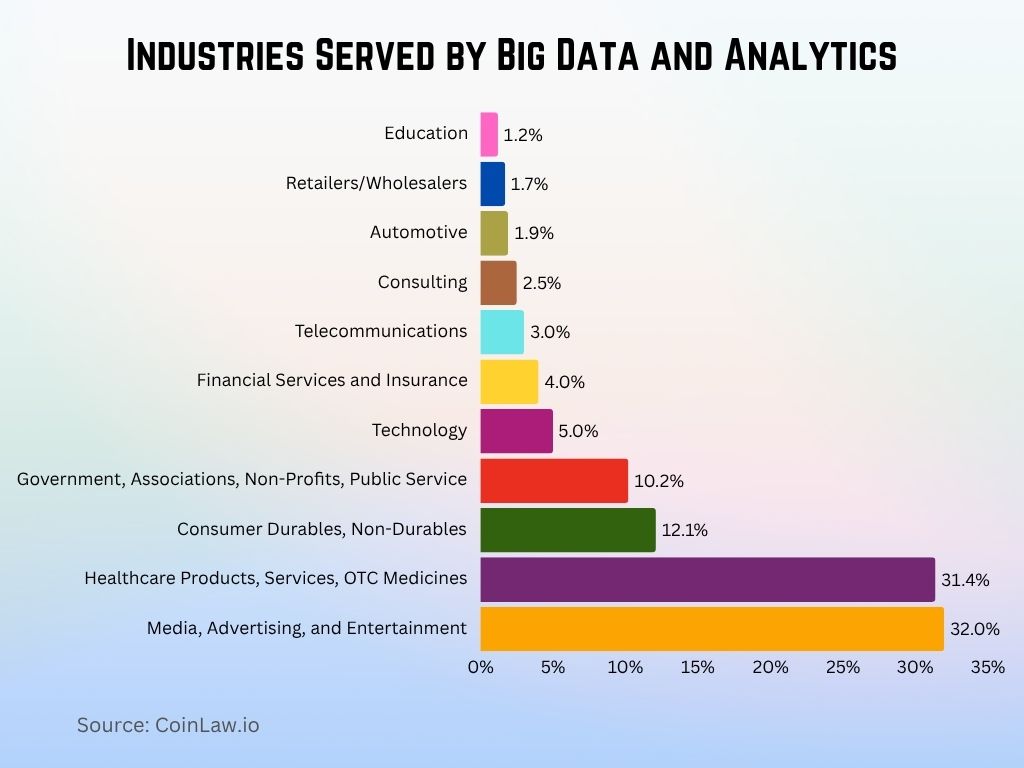
Use of Big Data for Risk Management and Fraud Detection
- 91% of U.S. banks now utilize AI-powered Big Data systems for fraud detection in 2025, showcasing their effectiveness in combating financial crime.
- Predictive analytics powered by Big Data helps financial firms identify 95% of high-risk transactions before they cause major losses.
- Institutions using AI-driven Big Data solutions for risk management have experienced up to a 30% increase in accuracy when forecasting financial risks.
- $5 billion is saved annually by global financial institutions through the use of Big Data analytics for detecting fraud and other financial crimes.
- Cybersecurity breaches have been reduced by 40% in organizations using Big Data for proactive risk management.
- Real-time monitoring systems, powered by Big Data, are now able to detect suspicious activities within milliseconds, drastically cutting down response times.
- RegTech solutions, integrated with Big Data, have seen a 22% rise in adoption across financial firms, helping them meet compliance requirements more efficiently.
AI and Machine Learning Integration with Big Data in Finance
- AI-driven trading systems now power 89% of global trading volume in 2025, significantly reducing trading errors and enhancing market predictions.
- Machine learning algorithms have improved customer service efficiency by over 70% in financial institutions, offering personalized recommendations based on Big Data insights.
- The adoption of AI technologies in conjunction with Big Data has increased by 40% in 2025, enabling smarter risk mitigation strategies across the financial sector.
- Robo-advisors, which rely on Big Data and AI, saw a 30% increase in customer adoption, managing over $1 trillion in assets globally.
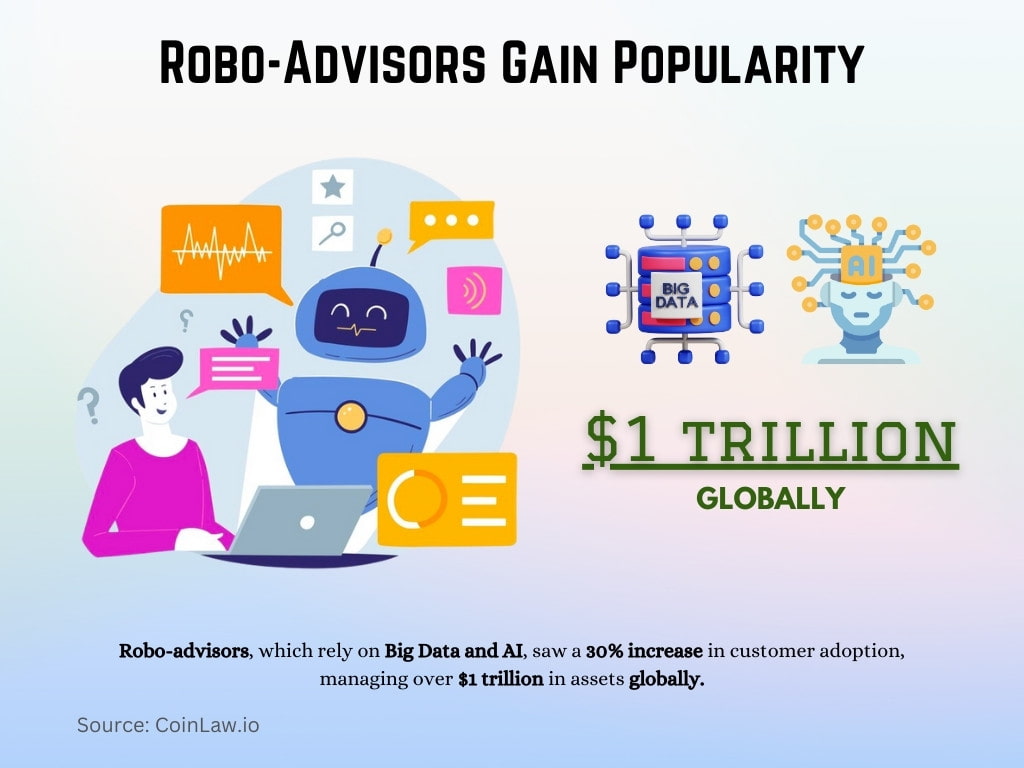
- Predictive models using machine learning now achieve up to 85% accuracy in forecasting credit defaults, improving banks’ lending strategies.
- AI-enhanced Big Data tools are automating up to 80% of routine banking tasks in 2025, significantly reducing operational costs.
- AI-based fraud detection systems analyze billions of transactions in real time, identifying fraudulent activities with 96% accuracy in 2025.
Customer Analytics and Improved Financial Services
- Customer satisfaction in banks using Big Data analytics rose by 17% in 2025, driven by better-targeted services and personalized recommendations.
- 84% of financial institutions reported improved decision-making in customer management due to the use of Big Data analytics.
- The use of predictive analytics in customer service reduced churn rates by 12% across financial institutions in 2025.
- Big Data enabled automated financial advisors to offer personalized investment strategies, leading to a 22% increase in customer engagement.
- Cross-selling rates in banks using Big Data for customer profiling increased by 25% in 2025, as institutions could better understand customer needs.
- Real-time customer behavior analytics allowed financial institutions to detect potential churn, improving retention rates by 18%.
- In 2025, 45% of financial firms offered personalized financial products based on Big Data insights, leading to higher conversion rates and customer satisfaction.
Tangible Benefits Businesses Expect from Big Data Initiatives
- Better, fact-based decision making and improved customer experience are the top priorities, each cited by 22% of respondents.
- Increased sales are a key outcome for 15%, reflecting Big Data’s impact on revenue growth.
- Reduced risk and new product innovations are expected by 11% of organizations, showing a focus on strategic resilience and R&D.
- More efficient operations and higher quality products/services each received 10%, pointing to goals of performance optimization and product excellence.

Real-time Stock Market Insights and Financial Models
- Real-time data analytics in stock markets improved trading accuracy by 20% in 2025, giving traders access to instantaneous insights.
- Big Data-driven financial models helped hedge funds outperform traditional models by 15% in 2025, leading to higher returns.
- 80% of high-frequency trading firms are now using Big Data analytics to optimize their algorithms and maximize profits.
- In 2025, real-time sentiment analysis of social media and news sources increased trading volume by 12%, as investors acted on market-moving news faster.
- Algorithmic trading systems, powered by Big Data, processed over 2 million trades per second on the major global stock exchanges in 2025.
- Predictive analytics for stock price movements improved forecast accuracy by 25%, helping investors better manage portfolio risks.
- The integration of Big Data and AI allowed financial institutions to simulate multiple market scenarios, reducing exposure to extreme market volatility by 30% in 2025.
Regulatory Challenges and Compliance in Big Data Utilization
- 67% of financial institutions cite regulatory compliance as their top challenge in leveraging Big Data in 2025, reflecting heightened global scrutiny.
- Data privacy regulations, including GDPR 2.0 and U.S. state laws, have increased Big Data initiative costs by 18–22% due to enhanced security requirements.
- 49% of financial executives believe that compliance risks could outweigh the benefits of Big Data analytics without clearer regulatory frameworks.

- RegTech adoption has surged by 28% in 2025, enabling firms to automate compliance and reporting processes efficiently.
- The average cost of non-compliance with data privacy laws has escalated to $14.82 million per incident in 2025, encompassing fines, legal fees, and reputational damage.
- Automated compliance tools, driven by Big Data, have reduced regulatory reporting time by 40%, streamlining operations and minimizing errors.
- Over 75% of financial institutions plan to increase spending on data governance and compliance measures in 2025, responding to evolving regulatory landscapes.
Future Trends and Challenges in Big Data for Finance
- By 2025, the global market for Big Data in finance is expected to grow to $20 billion, driven by advancements in AI and machine learning.
- Decentralized finance (DeFi) platforms are projected to see a 35% increase in the use of Big Data for enhancing transaction transparency and security.
- Quantum computing is set to revolutionize Big Data analytics by 2030, enabling financial models to process vast datasets at unprecedented speeds.
- 80% of financial firms plan to increase their investment in AI-powered Big Data tools over the next two years to stay competitive.
- The rise of sustainable finance will push institutions to use Big Data to track environmental, social, and governance (ESG) metrics more effectively, influencing investment strategies.
Big Data Adoption Rates by Company Size
- Large companies with 10,000+ employees show the highest Big Data adoption rate at 78%, highlighting their capacity for advanced analytics.
- Big companies (with 1,000+ employees) report a 48% adoption rate, indicating growing but uneven implementation.
- Mid-sized companies (with 100+ employees) lag behind at 43%, reflecting resource limitations or slower digital transformation.
- The overall average adoption rate across all organizational sizes is 50.1%, suggesting that half of the companies are leveraging Big Data to some extent.

Recent Developments in Big Data Technologies for Financial Markets
- Blockchain integration with Big Data in financial markets increased by 32% in 2025, enhancing transparency and data security in transactions.
- The use of cloud-based data lakes grew by 35% in 2025, enabling financial institutions to store and analyze massive datasets more efficiently.
- Natural Language Processing (NLP), combined with Big Data, improved decision-making by 20% in financial firms by analyzing customer feedback and market news in 2025.
- Federated learning adoption in the finance sector rose by 40% in 2025, allowing models to learn across multiple datasets without sharing sensitive information.
- 5G technology, when paired with Big Data analytics, enabled real-time financial data processing on a larger scale in 2025, facilitating faster decision-making.
- AI-powered chatbots, leveraging Big Data, handled over 80% of routine customer inquiries for major banks in 2025, improving service efficiency.
- Data tokenization grew by 20% in 2025, enhancing data security in financial transactions by replacing sensitive information with anonymized identifiers.
Conclusion
As we look ahead, it’s clear that Big Data is playing a transformative role in the finance industry. From driving real-time insights in the stock market to enhancing customer experiences and ensuring regulatory compliance, Big Data analytics is reshaping financial services at every level. With advancements in AI, machine learning, and quantum computing on the horizon, the future of finance will be more data-driven than ever. However, navigating the regulatory challenges and ethical considerations of Big Data will be critical as the industry continues to evolve. Financial institutions that successfully harness the power of Big Data will be well-positioned to lead in this rapidly changing landscape.
